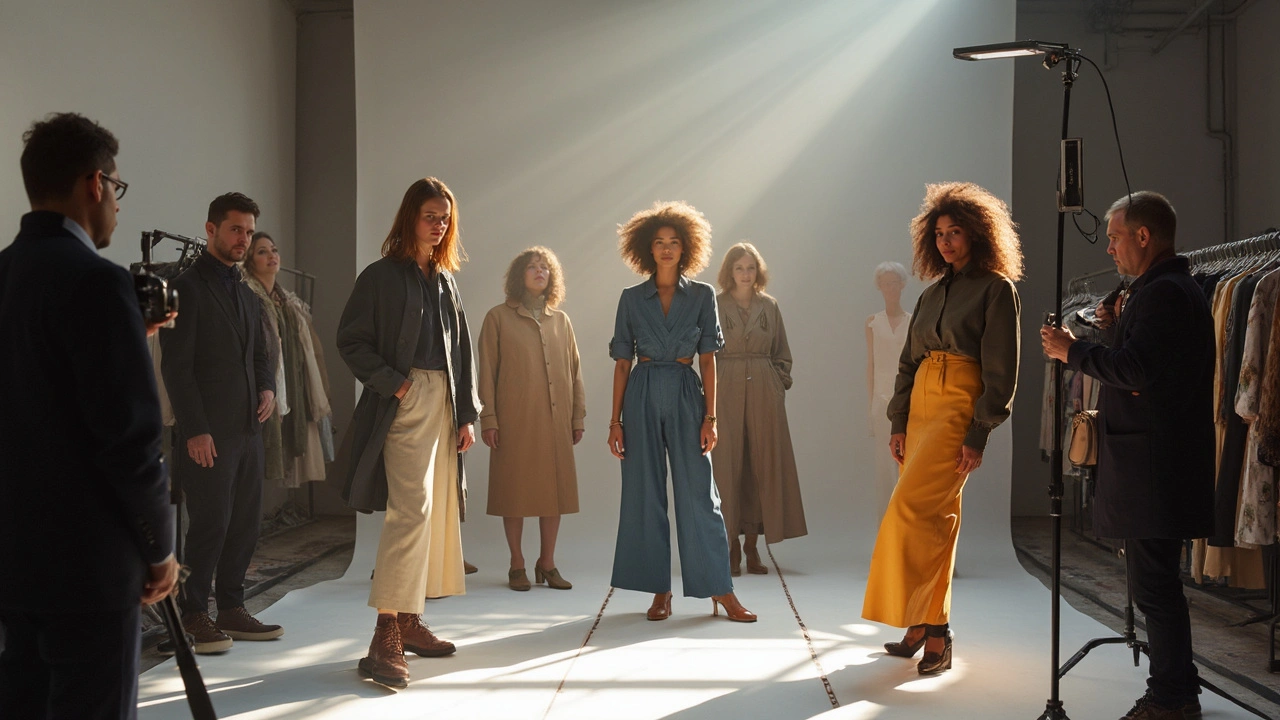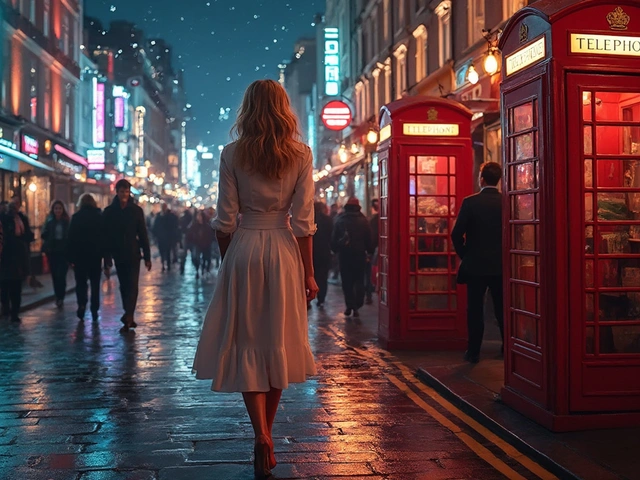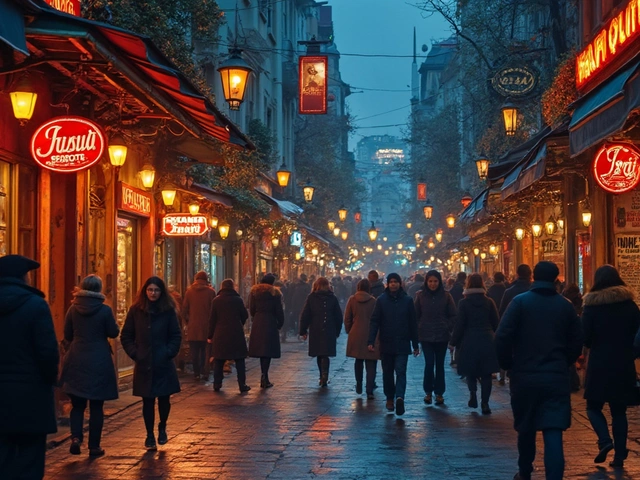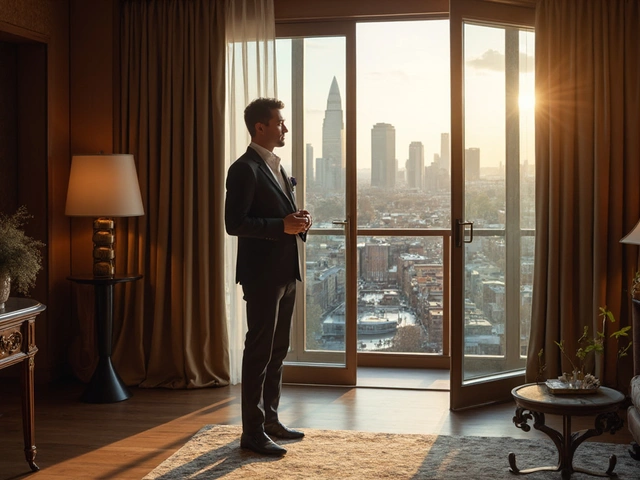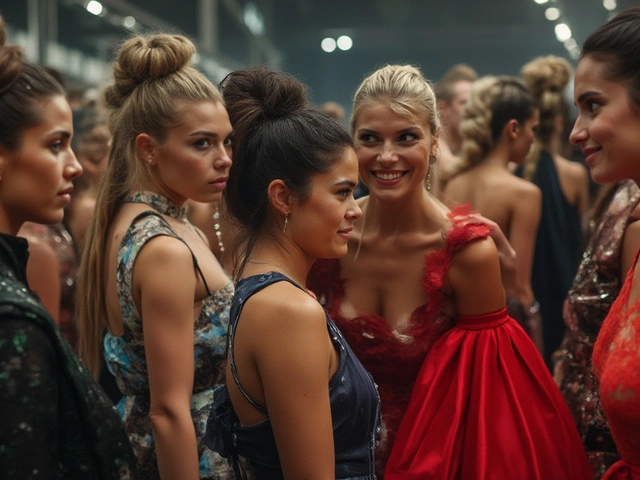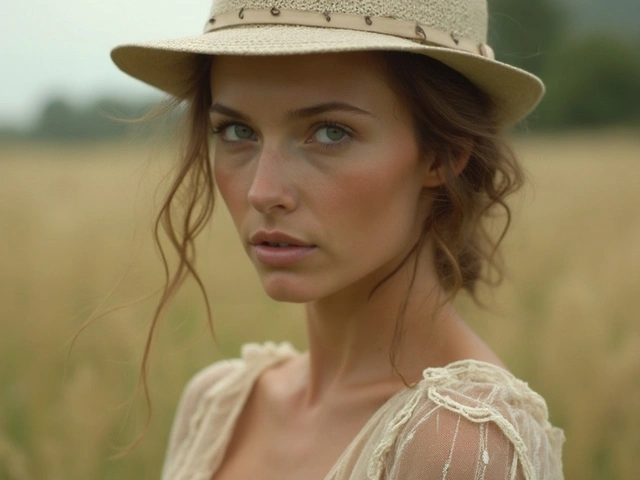If you want a shot to linger in someone’s memory, it’s not just about the clothes or the lighting. The perfect pose can turn a plain photo into one that feels alive, sharp, and unforgettable. Ever wonder how top fashion models make even the most complicated pose look natural? It’s not magic. It’s about technique, expression, and knowing what works for the camera. Fashion magazines and ad campaigns don’t just rely on fancy styling. Every iconic photo starts with a killer pose. I’ve spent hours on set seeing nerves turn into confidence, and flat images erupt into something you want to look at twice. Posing is an art—and, yes, there are science-based tricks behind it. Grab a mirror, your smartphone, or your best friend’s camera and let’s get hands-on.
Classic Model Poses That Never Fail
If you flip through issues of Vogue, Harper’s Bazaar, or even scroll the top Instagram feeds, you’ll spot certain poses cropping up again and again. They have a track record—because they flatter almost anyone, show off clothes perfectly, and make a photo “pop.” So let’s break down the power players
- The Three-Quarter Turn: This pose turns the torso slightly away from the camera—about 45 degrees—so both shoulders are still visible, but one leads the line. It elongates the body, emphasizes curves, and creates a dynamic feel. Watch Bella Hadid or Naomi Campbell—this move is in their toolkit.
- The Power Stance: Feet hip-width apart, shoulders back, head high. This confident, commanding stand is versatile. For women, a subtle hip-tilt can add attitude. For men, hands in pockets and relaxed facial muscles keep it real and runway-ready.
- Hands to the Face: Gently framing the face with the hands draws attention where it matters. If you angle the wrist down and fingers delicately touch the cheek or chin, it looks intentional, never forced. Check-the-mirror tip: no splayed fingers or tight fists.
- Sitting Poses: A chair, block, or staircase opens up new angles. Sit tall with one leg up and another extended, or slouch slightly (but never collapse) to play up attitude. Leaning forward with elbows on knees draws the viewer in.
- The Walking Pose: Captures motion and spontaneity. Ask the model to take a slow, confident step forward, swinging arms naturally. Photographers often use a fast shutter speed to freeze the moment just right. That cool, mid-stride look isn’t just for runways—magazine covers love it.
Getting these staples right is about tiny adjustments: shifting weight so one hip is out, relaxing the jaw, engaging the eyes (no blank stares). If a shot feels stiff, sometimes closing your eyes for a moment, then opening them as the shutter clicks, resets the vibe.
Studies from the London School of Fashion (2023) actually found that poses with asymmetry (one arm raised, hip popped) scored higher in shopper recall than dead-center, symmetrical ones. There’s something about a twist or slight curve that draws the eye—probably because it breaks up rigid lines. So, don’t be afraid to play with angles or even mess up your hair with your hands right at the end of a set.
One quick hack: pay attention to what your feet are doing. Many beginners anchor themselves in one spot or awkwardly point toes. Try this instead: lift your heel, turn a foot out, or push off slightly from one leg. Even tiny tweaks here transform energy and flow.
And while these classic poses are reliable, don’t treat them like a script. You want authenticity and a bit of soul. Practice the basics but improvise—let personality leak into the frame. Most of the time, it’s the relaxed, last-second shot between “real” takes that ends up being the favorite.

Creative and Dynamic Fashion Poses for the Camera
Now, this is where things get interesting. Once you’ve nailed the classics, playing with creative and unexpected poses doesn’t just get you noticed—it makes your photos feel like artwork. Ready to push it a little further?
- The Lean: Lean against a wall, window, or post, and let your body angle defy gravity. Over-emphasize the lean for drama. Switch up the mood by looking down or away rather than at the camera. This adds attitude and style.
- The Reach: Extend one arm or both. Reach up as if stretching or sideways as if pushing against air. This pose flatters long limbs—and can show off accessories like bangles or rings in editorial shots.
- Over-the-Shoulder Gaze: Always a crowd-pleaser for portraits and close-ups. Turn your back slightly to the lens and look back, maybe with a hint of a smile or a smolder. This works especially well when showing off detailed tops, earrings, or dramatic makeup.
- The Floor Pose: Lie down, curl sideways, or prop yourself up on one arm. Use the space—let limbs bend at unexpected angles. When Lily-Rose Depp sprawled elegantly on a velvet rug for a Chanel shoot, it went viral. Why? Because lying down breaks routine, catches light differently, and feels fresh.
- Jump Shots: Movement catches energy, and jumps freeze drama in mid-air. A little leap with an arched back or flared skirt makes images pop. Photographers might create dozens of frames to catch that one epic moment, but when it works, you can feel the momentum. Always loosen up before leaping, and find a rhythm—jumping on “three” so you’re airborne just as the camera snaps.
- Use of Props: Chairs, jackets, bags—incorporate them into the pose. Draping a jacket over your shoulders or holding a handbag at an angle can inject character. Props add levels and storytelling—think of Jay-Z’s 2024 Tiffany campaign, where models interacted dynamically with art installations to turn a static ad into a narrative.
You might get some odd looks trying things out in the studio, but fashion is about breaking rules. Try crouching, twisting, or holding hair up with both hands. Sometimes the best poses come from an unplanned movement—mess up on purpose, then laugh, and see what happens.
Shadow and light matter. A pose that looks average in flat lighting can turn electric with a sharp shadow across the face or body. Experiment with turning your chin up or letting your hair drop into the light—this can help shape cheekbones or highlight collarbones.
One trick that pro stylists and photographers use: tell a story. Pretend to dance, adjust your shoe, hide from raindrops, eavesdrop on someone. When you act out a mini-scene, your body naturally relaxes, and your expressions become real. If you’re stuck, try a series: sit, stand, spin, leap—snap multiple versions in a row. Chances are, you’ll discover angles and moods you didn’t know you had.
Fashion Week 2024 saw a ton of experimentation with dynamic poses—especially among Gen Z models. One standout backstage trend: using hands to create geometric shapes in front of the face or body, like making triangles or framing one eye. Watch out for this on magazine covers; it’s becoming a signature style across major campaigns this year.
Bring a portable mirror or ask to see shots on the monitor. When you get a sense of how your body and face look, you can refine, exaggerate, or tone down the next pose. Working with a partner? Take turns and trade feedback between shots. Sometimes what feels awkward looks electric on camera.
| Pose | Best For | Example Campaign |
|---|---|---|
| Three-Quarter Turn | Couture, Editorial | Dior Haute Couture SS24 |
| Lean | Street Style, Urban Looks | Zara Spring 2024 |
| Jump Shot | Youthful Brands, Sportswear | Adidas Originals 2024 |
| Sit & Slouch | Androgynous, Casual | Balenciaga FW23 |
| Hands to Face | Beauty, Accessories | Chanel No.5 2024 |

Pro Tips and Psychology of Stunning Model Poses
The truth is, even the best poses fall flat without strong energy or genuine attitude. Knowing why certain poses work helps you shoot confidently, communicate better with photographers, and even coach newer models. It’s about psychology—and body language isn’t just for interview rooms.
- Micro-Expressions Matter: The tiniest smile, sigh, or side-eye can add huge emotion. Practicing in a mirror helps, but letting those little quirks come out naturally—especially in between major poses—gives photos that real, documentary feel. Tyra Banks famously trains her models to "smize" (smile with the eyes); it might sound cheesy, but it absolutely works for drawing in the viewer.
- Relax, Then Engage: The best shots often happen just after a deep breath or a shake-out of the arms. Models like Adut Akech and Lucky Blue Smith are known for “resetting” between shots. Nerves, tension, or even fake confidence shows in stiff fingers and frozen smiles. Releasing that before the shutter clicks makes a difference.
- Awareness of Angles: Know your camera and your best side. Practice turning your head slightly, dropping a shoulder, or lengthening the neck—all classics for a reason. The camera exaggerates strong lines and muted zones; use that knowledge to guide your chin, cheekbones, and silhouette. A 2022 study published by the American Institute of Photography showed that off-center head tilts increased perceived attractiveness scores by 18% in test images, simply by adding a sense of curiosity and softness.
- Physical Prep: Professional models often stretch, do simple yoga poses, or dance briefly before big shoots. This isn’t just for comfort—it increases flexibility and confidence, making unusual poses safer and easier. A tight back or stiff hip is the enemy of flowy images.
- Facial Direction: Never underestimate where you’re looking. Looking away can hint at a story, looking down can exude shyness or sophistication, and a straight-ahead stare commands strength. There’s a reason cover shots almost always use a direct eye; it creates a subconscious bond with the viewer.
Don’t forget wardrobe mishaps. Outfits that are too tight can restrict movement, so bringing a selection in different sizes helps for unexpected posing. If you’re shooting jackets or oversized shirts, use the garment to add drama—swish fabric, flip collars, or let a sleeve droop naturally. Editors love movement over perfection.
One underrated tip: collaborate with your photographer. Talk over shot lists, try “bad” ideas on purpose, review images together, and don’t be afraid to experiment. The best magic often happens in an unguarded, unscripted moment. Dua Lipa’s 2023 Vogue Italia cover is a classic example—half the gallery was her laughing between set shots, but those were the ones editors picked.
For absolute beginners, start slow. Master just one or two poses, get comfortable, and record yourself. Then build up, adding gesture, movement, and expression each time. For pros, add props, motion, and storytelling—challenge yourself to invent a new signature pose or riff on what you’ve seen in this month’s campaigns. The industry rewards what feels new.
| Body Part | Simple Mistake | Pro Fix |
|---|---|---|
| Hands | Squeezing or splaying | Relax, curve fingers gently |
| Shoulders | Up too high, stiff | Roll back, drop subtly |
| Hips | Locked, uneven | Shift weight, try one foot back |
| Face | Blank stare | Engage the eyes, micro-smile |
| Legs | Parallel, rigid | Cross ankles, bend one knee |
And if you want your shot to stand out on social media or in a magazine—capture a tiny, unscripted moment. The best images feel like you walked right into something authentic. Classic moves, creative poses, and a bit of your own flavor? That’s the recipe for unforgettable fashion photography. Just remember, nobody starts perfect. Pose, click, review, repeat. The magic happens when you stop worrying and start moving.
